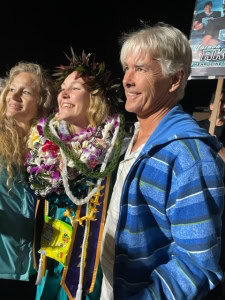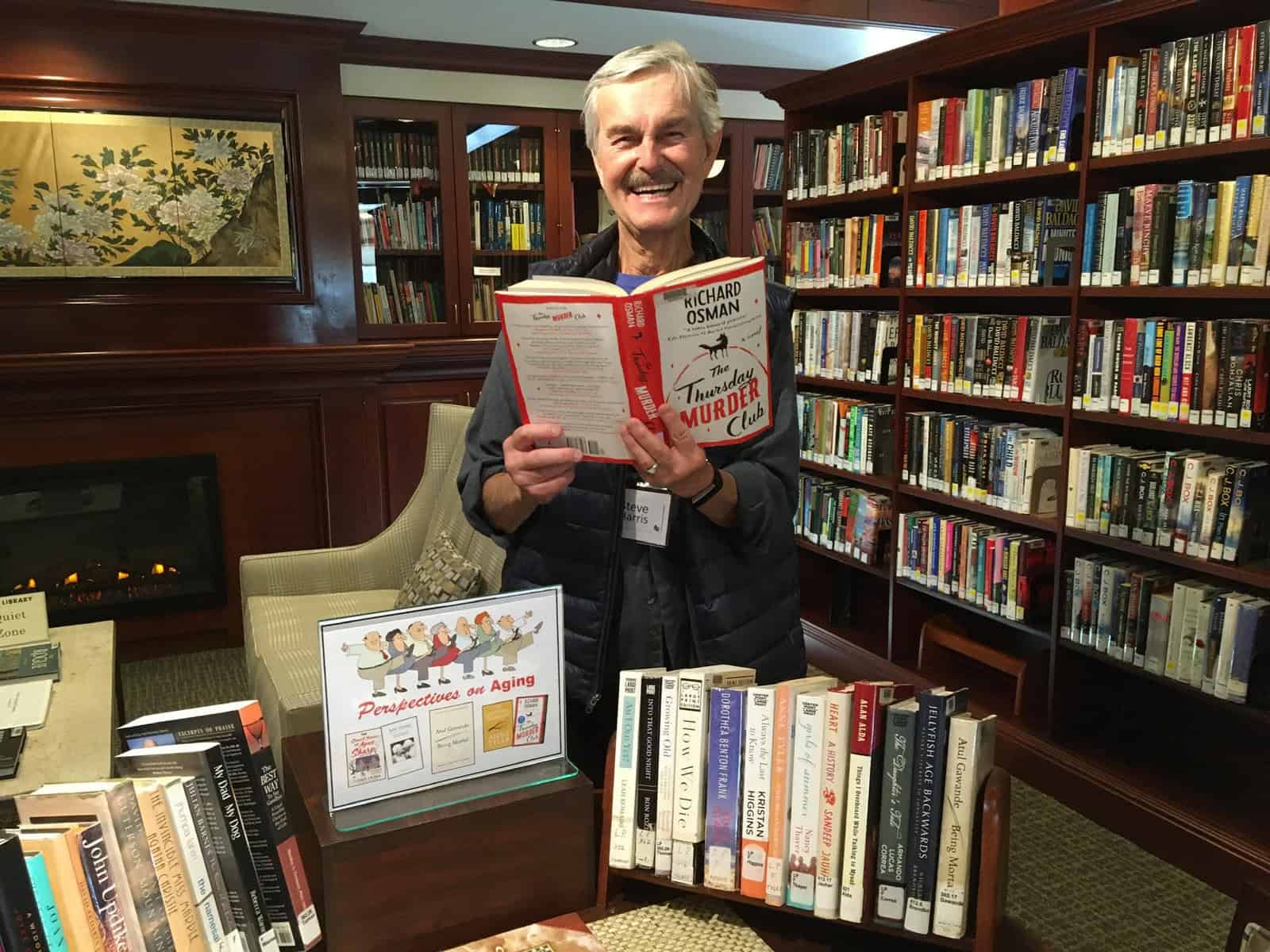(Nit Wit Newz is an unauthorized, often unreliable, on-line news service designed to keep Manor residents abreast of the inconsequential, unverified, and trifling events that dramatically shape and inform our everyday lives here at Rogue Valley Manor.)
THE GREENING OF THE MANOR
(Mrs.): Cucumbers, dear?
(Mr.): Yes, please. Just a couple of slices here on my Fruit Loops.
(Mrs.): More coffee?
(Mr.): For sure. I think I’ll need it today.
(Mrs.): Really? What’s on your agenda?
(Mr.): Well, I’ve got an appointment with the Dining Services people up at the Manor. As you well know, I’m continually trying to get them to serve even more cucumbers to their residents.
(Mrs.): Why the concern? Those Dining Service people must love you. You said that the
Manor’s the largest buyer of cucumbers in Jackson county. They’ll welcome your suggestions to purchase more if you give them reason to.
(Mr,): Yeah, well maybe…
(Mrs.): Sweetie, they loved your idea of packing three cucumber slices in every take-out salad container. You convinced them to include cukes in the Mountain View salad bar almost every night. The new menu in the Manor dining room includes cucumbers and so does the Chop Salad in the Bistro. And that “starter” item you suggested for Arden where they hollowed out two inch slices of cucumbers and filled them with an exotic avocado mixture—that was culinary genius and sales genius.
(Mr.): I know, I know, but that may be my problem.
(Mrs.) What do you mean?
(Mr.): Well, I’m getting hints that maybe we’ve done too good of a job. They think that CCF maybe creeping in among some of the residents.
Mrs.): CCF?
(Mr.): Yeah, Chronic Cucumber Fatigue—too much of a good thing, I guess. Apparently they’re getting a few complaints. Some people may be maxing out on cucumbers. Others, it seems, can’t handle cukes—you know, burps, heartburn, indigestion, that sort of thing.
(Mrs.): Just don’t you worry, darling. That’s nonsense, most people love cucumbers. And you are Jackson County’s Cucumber Advisory Board’s very best salesman. Why, just last year, at their annual board meeting, they voted you “Mr. Cucumber of 2022.” It made me so proud.
(Mr.): Yeah, that was a real honor.
(Mrs.): And it meant that you’ve been able to drive around in that cute little, cucumber shaped green car all year long. I love the bumper sticker slogan you came up with. How does it go? Oh yeah, “Cucumbers—the taste that lingers!”
(Mr.): You’re right, but here’s my problem: we’re coming to the end of the year and there’s an upstart sales guy that looks like he’s closing in on me. No one’s ever won the title of “Mr. Cucumber” two years in a row, and I want to be that guy.
(Mrs.): And you will be, I’m sure of that. But that reminds me, did you ever present my recipe for the sliced cucumbers floating in lime Jello to the Dining Service committee? It’s so colorful. My bridge group loved…
(Mr.): Sorry, I guess I forgot to tell you, they tested it out and it didn’t go over very well. Lets put that aside for the moment, I’ve got to come up with a new, big idea now for my meeting today. You know, I was searching for ideas on “Cucumbers” in Wikipedia the other day, and it said among other things, that cucumbers were a ”repellent against wood lice and fish moths,” That’s pretty interesting, but I’ve been unable to figure out a way to work that sales point into my pitch to the Manor to get them to use more cukes.
(Mrs.): I have every confidence you’ll come up with something. Ideas are your stock in trade. Didn’t you come up with…
(Mr.): Hey, wait a minute, this is November, it’s Thanksgiving time. The Manor puts on this huge feast for their residents. I’m thinking turkey. I’m thinking turkey dressing. I’m thinking turkey cucumber dressing. They’ll need to order a heck of a lot more cases of cucumbers for that.
(Mrs.): You see? Oh, darling, I knew you’d come through. Now let me think, I believe I’ve got a recipe for cucumber dressing they can use. It should be right here…
(Mr.): Oh boy, here they come—the ideas are beginning to flow. We could print up a table-tent card to put on the serving table next to the bowl of cucumber dressing: “Try this delicious new Cucumber Turkey Dressing and protect yourself against wood lice and fish moths.” What do you think?
(Mrs.): Ahh, I’m not too sure…
(Mr.): Well, maybe I’ll leave it up to the Dining Services people to decide on that. But how about this for Christmas—they also have a big time spread up at the Manor and when I think of Christmas food, fruitcake pops into my mind. Those fruitcake guys have had the Christmas gift food niche all to themselves for what—a couple hundred years or so?. Time for them to move aside for— cukecakes! Can you guess what the main ingredient will be? Did I hear you say cucumbers?
(Mrs.): Yes, cucumbers, indeed.
(Mr.): You got it! Hey, this is a win-win-win-win-win concept. The RVM residents will love the Cuke Cakes at their Christmas dinner, that’s win # 1; Win #2, the Dining Services people will look like innovative food geniuses; The RVM Foundation group wins—that’s #3—since they can make some bucks by gift wrapping the cakes and selling them to residents as gifts for friends and relatives instead of those tired old fruitcakes; the fourth winner is the Cucumber Advisory Board—cukecakes will give them a whole new revenue stream, and win #5—I’ll be “Mr. Cucumber” for an unprecedented, two years in a row!
(Mrs.): That would be just wonderful, dear.
(Mr.): Yep, this is getting really exciting. Boy oh boy, I can’t wait, I’m going to jump in my car and head for the Manor right now. Wish me luck.
(Mrs.): Oh, you won’t need any luck, they’ll love your cukecakes idea.
(Mr.): Boy, I hope so. Well, see you tonight! What’s for dinn…oh, never mind, I think I know. .
—A. Looney






 The traditional Hawaiian Lei is a necklace — often a long one — of fresh flowers threaded together.
The traditional Hawaiian Lei is a necklace — often a long one — of fresh flowers threaded together.  Leis are commonly incorporated into special occasions such a graduations, weddings or birthdays, office promotions, anniversaries, or any special event. In such cases, honorees may be almost buried in flowers
Leis are commonly incorporated into special occasions such a graduations, weddings or birthdays, office promotions, anniversaries, or any special event. In such cases, honorees may be almost buried in flowers Specific types of leis may be associated with particular events or celebrations,
Specific types of leis may be associated with particular events or celebrations,




